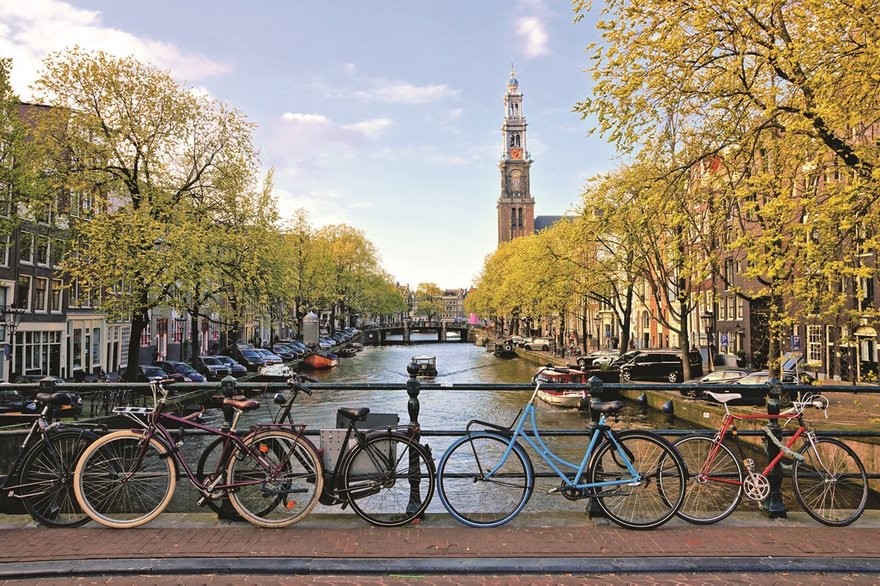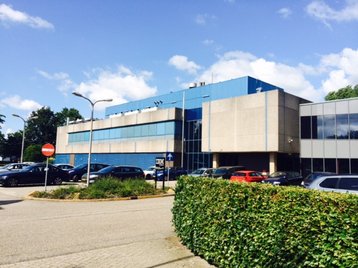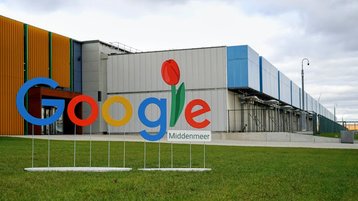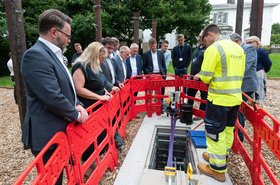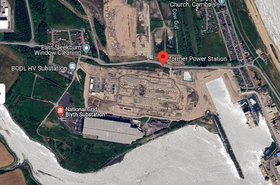July 12, 2019, was shaping up to be a normal day for Amsterdam’s many digital infrastructure providers. Life appeared to be pretty good in what was one of Europe’s most popular data center markets. Then came an announcement from the Municipality of Amsterdam that changed everything.
The municipality, which covers the historic heart of the Dutch capital, along with the adjoining precinct of Haarlemmermeer, announced an immediate ban on all new data center developments.
This moratorium was lifted a year later, but as the five-year anniversary of this surprise decision approaches, its effects are still being felt across the market.
“Amsterdam is still a top-tier market; it’s currently the third biggest in Europe, but it’s about to drop to number four because Paris will soon grow to a greater size,” says Andrew Jay, head of data center solutions at CBRE. “It’s always been number three, but the original moratorium really knocked the wind out of Amsterdam’s sails.”
Further restrictions and moratoriums have followed, meaning Amsterdam has lost ground on its rivals that it may never recover.
2019 and all that
The reason for a moratorium, the municipalities said, was primarily one of space. DCD reported at the time that officials decided to impose the pause to ensure "that data centers occupy as little space as possible... and [architecturally] fit in well with the environment."
“The arrival of data centers is, in a sense, a result of our own consumption and lifestyle: We want to be online on our phones and laptops all day,” said Marieke van Doorninck, Amsterdam's alderman for sustainability and spatial development. “To a certain extent, we will have to accept the associated infrastructure, but the space in Amsterdam is scarce.”
Haarlemmermeer apparently had similar concerns, with Mariëtte Sedee, alderman for spatial development, environment, and agricultural affairs, adding: “The space in our municipality is of great value... It is necessary to be on-site and formulate policy first, so that we keep a better grip on the location of data centers.”
At the time, Amsterdam had become a victim of its own success, with its data center market regularly growing at a rate of 10-15 percent a year.
The city’s status as a connectivity hub for Europe ensures it is an attractive proposition for operators, Jay says. “It became a big Internet exchange point around the time of the dotcom-boom,” he explains. “It doesn’t have as many big enterprise companies as Paris or Frankfurt, but this interconnectivity drove demand.
“The moratorium knocked everyone for six because we didn’t have as much demand as we have today, but here was one of the main cities saying: ‘You can’t come to this area.’”
Though the ban only covered two of Amsterdam’s districts, its effect, says Edgar van Essen, was to suggest the entire city was closed for new data center business. Van Essen is managing director of Amsterdam-based Switch Datacenters, which runs four facilities in the region, so has witnessed the impact of the ban firsthand.
“The image of the whole of Amsterdam was negatively hit by decisions from a small part of Amsterdam,” he says. “The misconception in the market was that the city had shut down, whereas, in fact, the moratorium related to two municipalities representing less than 20 percent of it.
“But if Americans see headlines saying ‘Amsterdam is closed,’ then they won’t do any further reading, they’ll just move on to another city.”
The initial moratorium ended in 2020, when an agreement was reached to allow new data centers to be built in designated areas of the two municipalities, providing they met stringent energy efficiency requirements.
The Dutch Datacenter Association (DDA) helped broker the agreement on behalf of its members. Stijn Grove, its managing director, says the initial moratorium was damaging because “trust in a market is hard to gain but easy to lose.”
Grove says: “The moratorium on new projects then had significant impacts on the local data center market, influencing both its immediate and long-term dynamics. Initially, the sudden halt on new construction was, of course, a shock to the industry and, in hindsight, not needed as in terms of policies, nothing has really changed since.”
Indeed, Amsterdam already had stringent rules in place around the efficiency requirements for data center, with new builds required to achieve a Power Usage Effectiveness (PUE) rating of 1.2, and existing facilities having to hit 1.3.
On the impact of the moratorium, the DDA’s State of Dutch Data Centers 2024 report, published at the start of June, notes that in recent years “growth in the Dutch colocation market had slowed significantly.”
The report says: “The moratorium in Amsterdam and Haarlemmermeer, caused the international demand, especially for wholesale data center space, to drop strongly and move to other locations across Europe.”
Data from the DDA shows that the total number of data centers in the Netherlands was lower last year (187) than in 2019 (189). There are also fewer colo companies operating across the country, with 95 last year compared to 111 in 2019. While other factors will have played a part, given that the Amsterdam metropolitan area represents 71 percent of the entire Dutch market, per the DDA’s figures, it is likely the moratorium has had an impact.
Amsterdam is also lagging behind its Tier One rivals in the other FLAPD markets - Frankfurt, London, Paris, and Dublin - when it comes to adding new capacity. According to CBRE, last year it gained an additional 62MW, significantly less than any of the other FLAPD nations (London, the second lowest, added 82MW). And in the first quarter of 2024, no new capacity was brought online.
What next for Amsterdam?
Van Essen believes the initial moratorium was politically motivated. Despite Amsterdam’s status as a data center hub, the industry’s impact on the environment means it has come under close scrutiny for many years.
Microsoft has been engaged in a long-running battle with farmers living near its data center campus in Hollands Kroon, 50km outside Amsterdam, where Google and CyrusOne also operate facilities. The farmers say the data centers are encroaching on valuable and limited agricultural land, while the high volume of water consumed by the campus has also raised eyebrows during recent droughts.
Elsewhere, in 2022 Meta killed a plan to build a 200MW data center in Zeewolde, east of Amsterdam. The five-data hall facility would’ve been the largest campus in the Netherlands at the time, but having initially been given planning permission, Facebook’s parent company ran into opposition from the Dutch Senate, as part of the land for the data center was owned by the government. Lawmakers decided not to sell this land, and as a result, the project bit the dust. The site has since been unzoned, meaning it cannot be used for data centers.
“There are a lot of very negative opinions about big data centers in the minds of politicians,” Van Essen says. “As a result, they came up with these rules that bash the industry harder. The rules were the result of a political climate where declaring that you were against data centers became the right thing to say at parties.”
Though the original moratorium has long since been and gone, heavy restrictions remain in place in Amsterdam and across the Netherlands, not least around new hyperscale developments. Projects with an IT capacity of 70MW or more, or those above 10 hectares in size, are banned in most of the Netherlands, with a handful of exceptions for sites in the north of the country. The government says this is due to a lack of power capacity for the facilities, and the hyperscale ban has been compounded in Amsterdam itself by a fresh round of restrictions imposed in the Amsterdam and Haarlemmermeer municipalities in December 2023, in a bid to control the amount of energy used by data centers.
The DDA described this latest development as "symbol politics,” which seeks to blame data centers for wider power supply problems experienced on Holland’s grid. "The issues with the current grid congestion will not disappear,” it warned in January. For its part, the municipality said it was committed to ensuring the region remains “an attractive location for data centers” but that operators must do their bit to ensure residual heat is reused and that water consumption is kept to a minimum.
Development of existing hyperscale data centers, or those that had already received planning permission prior to the restrictions, is still allowed, meaning some building continues. In April, Google broke ground on its fourth Dutch data center, and says it will invest €600 million ($643m) building out the facility in Groningen.
But the effect of this complex web of rules and partial moratoriums is that, according to CBRE’s Jay, the hyperscalers are simply looking elsewhere. “We’re in a firmly hyperscaler-driven market now,” he says. “In any given quarter, they’re responsible for 85-90 percent of the new capacity coming online, so the kind of moratoriums we’ve seen in Amsterdam are not doing wonders for supply.
“There’s still demand for Amsterdam, and it’s not a case that the other FLAPD locations have done anything to make themselves more attractive. They just haven’t made the moves Amsterdam has to make itself unattractive.”
The picture isn’t entirely bleak for the Dutch capital. The DDA report predicts the market will grow at a rate of 10 percent over the next year, presenting opportunities for companies like Switch Datacenters.
“We try and show the added value we can bring to communities,” Van Essen says. “We go directly to municipalities and explain we’re a local company building data centers and that we can help them meet their sustainability targets because we have this green residual heat that can be put to use in district heating systems.
“We think that’s a smart approach, because by trying to work together we can show them that data centers are not the enemy.”

